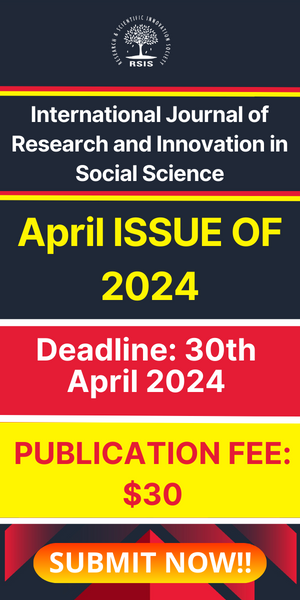Recalibrations of the Tribals’s Socio, Economic and Political Status in Tanjavur: An Explorative Study
- April 17, 2018
- Posted by: RSIS
- Category: Social Science
International Journal of Research and Innovation in Social Science (IJRISS) | Volume II, Issue IV, April 2018 | ISSN 2454-6186
V.Kumar
Research Scholar, Department of History, Manonmaniam Sundaranar University, Tirunelveli, Tamil Nadu, India
Abstract: – Issues of tribal development, integration and autonomy have confronted the Indian society right from the British rule in India. Complexity of Indian tribal population made the task of integration and autonomy even difficult. Ethnic tribal sub nationalism posed serious challenges and hampered the progress of the communities over the time. Autonomy is desired so that development policies are evolved to suit the tribal culture and lifestyle. On the other hand leaving the tribal in their own state will deepen the developmental divide between the mainstream and the tribals even deeper. Post-independence the basic issue is that the integration is largely directed from above and not from below. Integration of tribes has neglected their own needs and desires.
Key Words: Tribal Culture, problem, poverty, Government Policy, Geographical isolation and present Problem.
I. INTRODUCTION
The Geographical area of Tamil Nadu State is 1, 30, 058 Sq.Km. There are 36 sub-group of Tribes in the State. The main tribes among them are Malayali, Toda, Kurumbas, Paniyan, Irular, Kattunayakan, Kanikkar, Palliyan, Kadar, etc. Of which Toda, Kota, Kurumbas, Kattunayakan, Paniyan and Irular have been designated as ‘Particularly Vulnerable Tribal Groups (PVTG)’. The combined Scheduled Tribes population of the State as per 2011 Census is 7.94 lakh representing 1.10% of the total population of the State (which is 721 lakh). Out of the 7.94 lakh Tribal, 50.50% constituted Males and 49.50% constituted Females. The Tribal pockets are classified as Integrated Tribal Development Programme (ITDP), Modified Area Development Approach (MADA) and Clusters, However, Tamil Nadu has only ITDP Areas. Integrated Tribal Development Programme (ITDP), which are generally contiguous areas of the size of one or more blocks in which the ST population is 50% or more of the total population.
Thanjavur district lies in the Kaveri delta, the most fertile region in the state. The district is the main rice producing region in the state and hence known as the Rice Bowl of Tamil Nadu. Kaveri River and its tributaries irrigate the district. Apart from paddy, farmers here grow coconut and sugarcane and it is the largest producer of coconut in Tamil Nadu. Being an agrarian economy, industrial growth in the district is mainly confined to agro-based industries. A large number of Rice mills, Oil mills are spread over the district.


